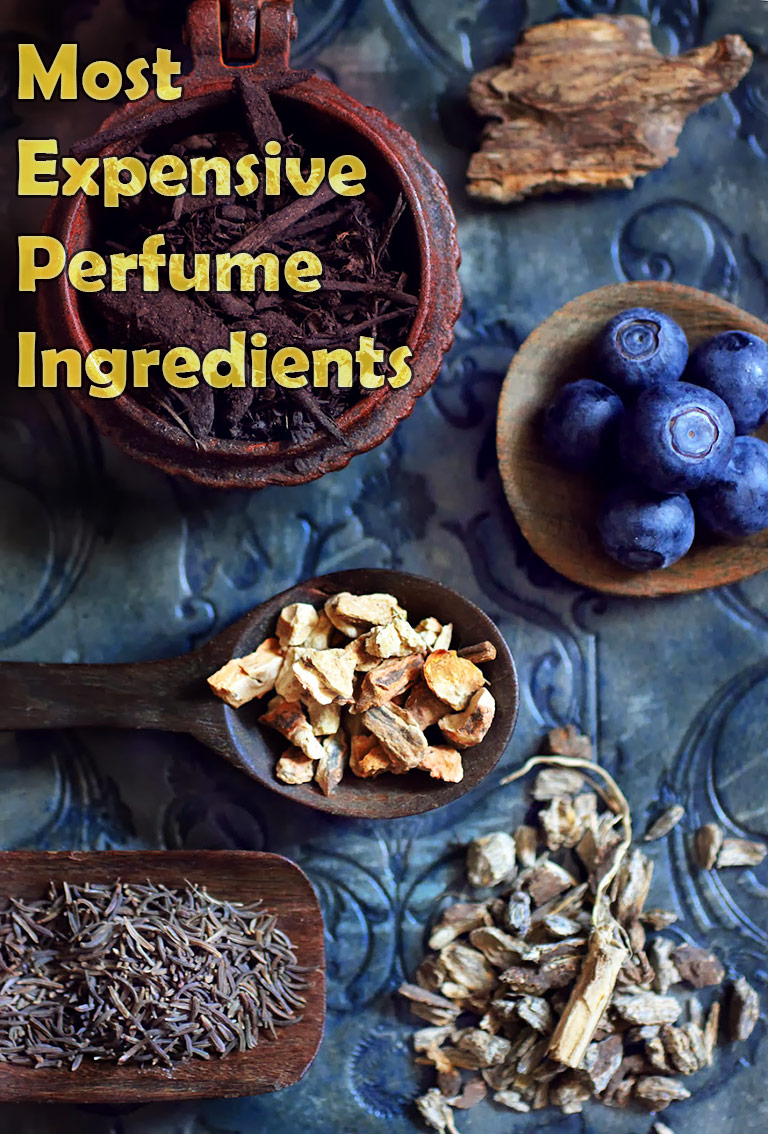
Wondering why some perfumes cost so much? You know, the ones worn by Saudia Arabian princesses and the Kardashian clan? The secret lies in the main perfume ingredients and in this article, I unveil the 6 most expensive fragrance ingredients in the world. But first, a look at what makes perfume so expensive.
The Ingredients
The rarer the ingredient, the more expensive it will be. As you’ll see, it can take literally tons of flowers (or their bulbs) to create the oils sold to the fragrance industry.
Some of these flowers only bloom one month a year. Others have to be picked before sunrise. Almost all are delicate and have to be produced into oil immediately.
Those are the flowers. Some exquisite ingredients come from wood. Wood that has to be infected with a particular mold.
And then there are the ingredients that come from the glands of animals or the guts of whales. Those are pretty hard to come by, too. We’ll cover this too (and find out if vegans can ethically wear musk).
Beware the Fakes
If a perfume purports to be a rose perfume but is sold at Walmart, well, you can pretty much bet there’s no rose oil in it. Many, many cheap perfumes are made of synthetic fragrances created in labs to mimic the real thing.
The finest (and most expensive) perfumes are made of absolute oils, which come from certain flowers.
Read on to see why these 6 fragrance ingrediences are so beloved.
Jasmine
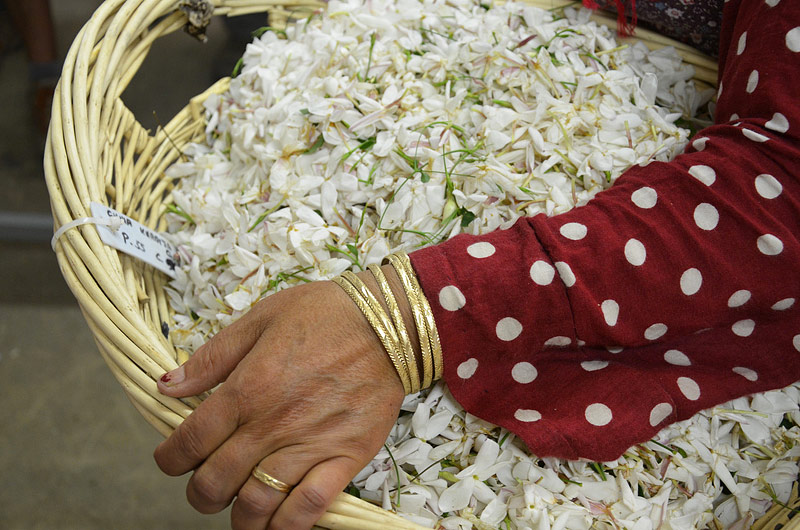
Jasmine and its synthetic version are used in more than 80 percent of all women’s perfumes. But the real stuff is EXPENSIVE.
It takes approximately 2,000 pounds of jasmine flowers to produce one pound of oil and 8,000 jasmine flowers to yield 1/25 ounce of the absolute oil (the most precious of the oils because it’s so concentrated). Because of the enormous waste — er, amount — of flowers it takes to produce the oil necessary to use in fragrances, the price of jasmine oil is hi-i-i-iiiiiiiiiigh. You’ll pay $80 for 1/8 of an ounce on the reputable Mountain Herbs website. Compare this to lavender oil, which costs $5.25 for 1/2 ounce.
Ouch.
What’s more, jasmine flowers are incredibly fragile and must be placed in special baskets to protect the petals from bruising. And processing has to be immediate.
Bulgarian Rose
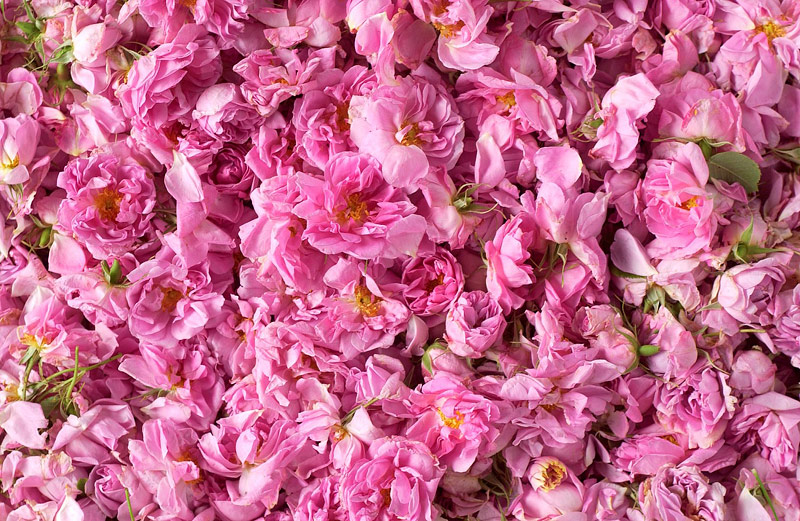
Like jasmine, rose oil is found in most fragrances. But rose production is even more time intensive and therefore more expensive than jasmine.
While it takes 2,000 pounds of jasmine oil to produce a pound of oil, it takes 10,000 pounds of rose petals to distill one pound of the highly coveted rose oil. Hello!
The Rose Valley in Bulgaria produces 70 percent of the world’s rose oil. The picking season in this valley dates back more than 300 years and is very short.
Workers (usually women) only have a few weeks from May to June to pick the flowers and they have to get their jobs done in the dark before sunrise. Each flower has to be cut individually (hello thorns!), laid in willow baskets and then taken immediately to a distillery.
No wonder it costs a whopping $179.50 for 1/8th an ounce of Bulgarian Rose absolute essential oil on
Because of the high price of rose oil, cheating is rampant. Wikipedia reports some rose producers cheat the system by diluting the oil with geranium or palmarosa essential oils, which contain the same chemical as rose. According to Wikipedia, Some of these “rose oils” are up to 90% geranium or palmarosa to 10% rose.
Orris
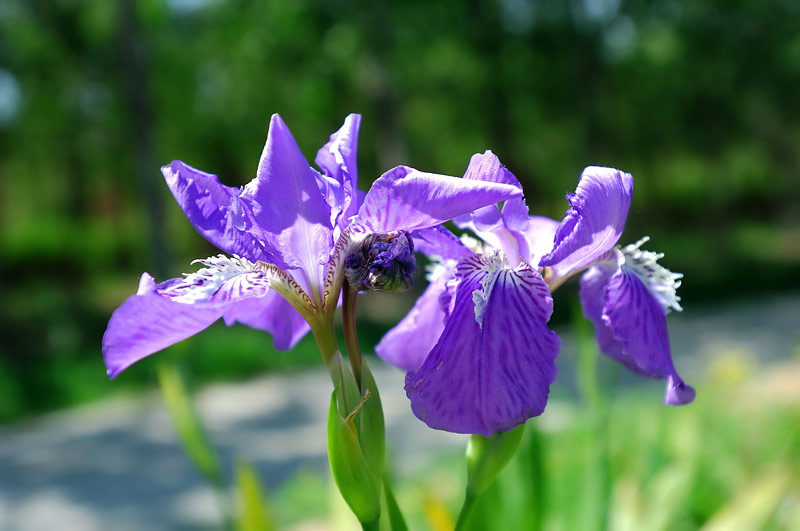
Now that you’ve been told about the vast quantities of rose and jasmine petals it takes to make oil, wait until you learn about the iris bulb, which creates the extremely expensive oil, orris.
James Craven, a perfume archivist at Les Senteurs in London, named Orris one of the top 3 most expensive perfume ingredients in the world. Why? Because it’s a huge headache to make the stuff. One needs ONE TON of iris plant bulbs that have been aged 2 to 5 years to produce 2 kilos (4.4 pounds) of essential oil.
Yep. And you thought “that’s a lot of roses.” How about those iris bulbs, eh?
Oud

Oud (or “oudh”) comes from the wood of a wild tropical tree called the agar. No biggie, right? Well, the wood has to become infected with a type of mold called “Phialophora parasitica,” which causes the wood to produce oud, a dark, extremely fragrant resin. Apparently only 2 percent of agar trees produce oud, making it incredibly precious. And therefore, expensive.
Due to its rarity, high demand, and the difficulty of harvesting it, oud oil is one of the most expensive oils in the world. At one point, its value was estimated to be 1.5 times of the value of gold, and it is sometimes referred to as “liquid gold.”
Fortune Magazine reports that the essential oil, used in perfumes, can sell for more than $5,000 a pound.
Oud has been popular in the Middle East for centuries and is enjoying a boom here in the West with more and more brands creating oud fragrances. But they all come at a price. Kilian’s Rose Oud Eau de Parfum Perfume, for example, will set you back more than $500. Tom Ford’s Tobacco Oud, a favorite, costs only $220
Musk
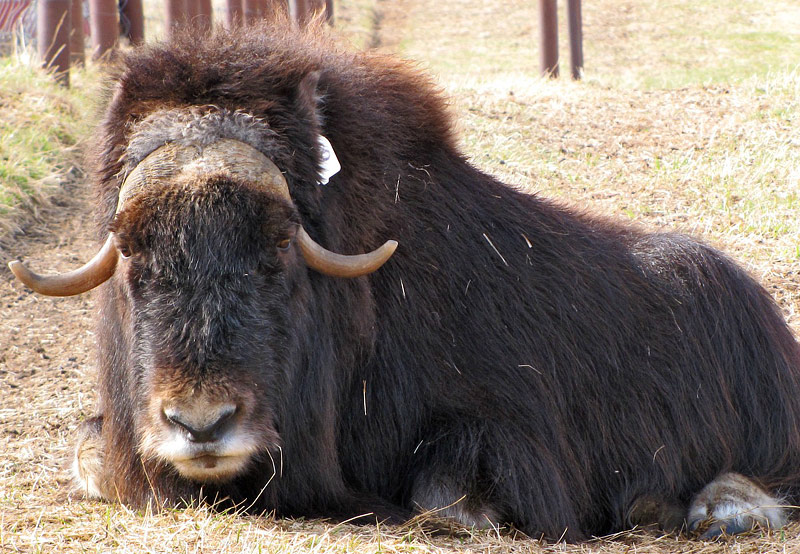
If you research musk online, you’ll find all sorts of false information, like this, which I found on a terrible perfume website:
Musk is perhaps the most powerful of all perfume fragrances, and the most expensive. Musk comes from the male musk deer. It is extracted from the deer in the form of grains. Musk has been a key constituent in very many perfumes since its discovery. It is currently found in 35% of all men’s perfumes and fragrances. It is a very good fixative, and is exceptionally long lasting. There are many synthetic musks, and musk is one of the most important ingredients in perfumes. Musk in its natural or synthetic form can be found in 90% of all fine fragrances.
Ugggh. No, actually. While natural musk is one of the most expensive animal products in the world, according to Wikipedia, the vast majority of musk produced and sold in the world these days is synthetic. Why? Because to get real, authentic, natural musk, you must first kill a male musk deer, which is an endangered animal.
Natural musk was used extensively until the late 19th century when people got ethical and stopped the slaughter of these deer, which live in Nepal and that region of the world. Poachers still kill these deer, harvest their musk pods, which are glands located in the abdomen near the deer’s penis, and then create a grain from the dried-out musk pod.
Ambergris
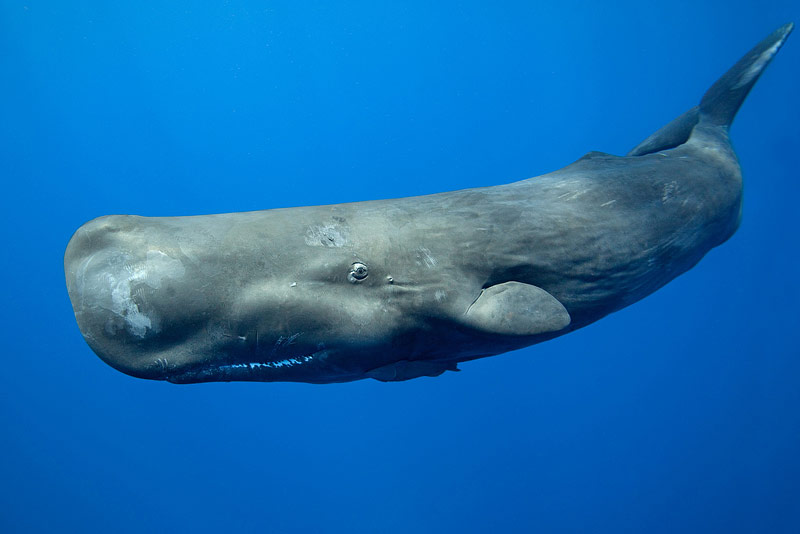
Craven told Bloomberg News that Ambergris is one of the 3 most expensive perfume ingredients today. And no wonder, because it comes from the intestines of sperm whales. No kidding. And there’s whale fecal matter involved in this musky scent.



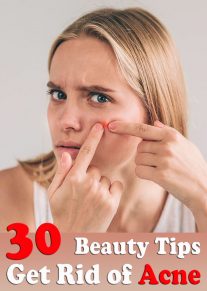

Leave a Reply